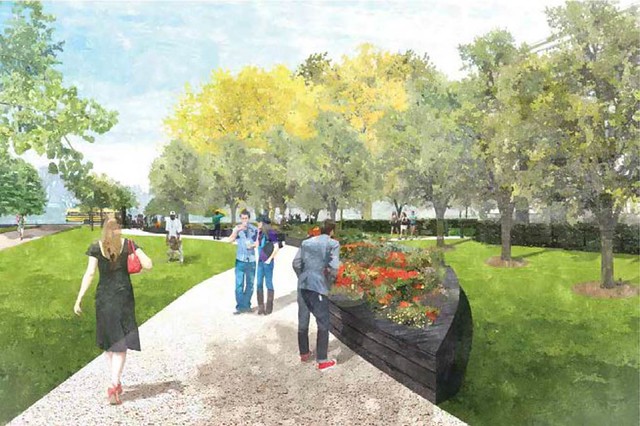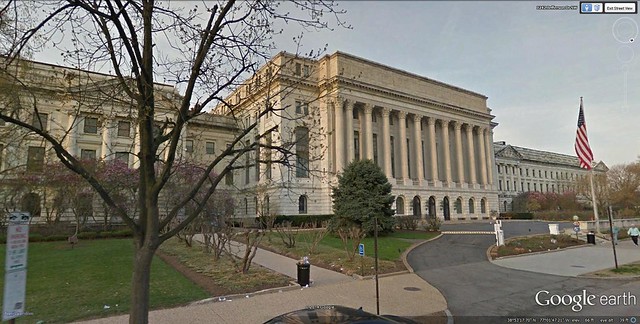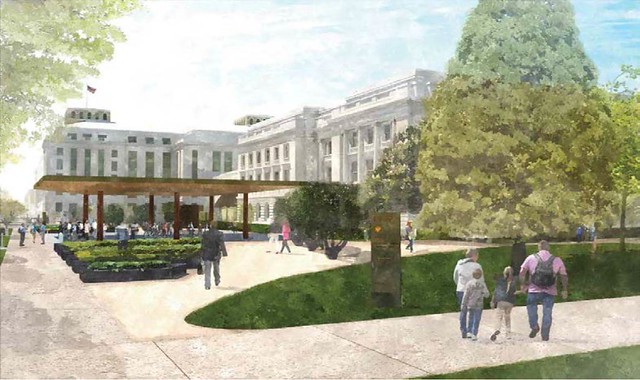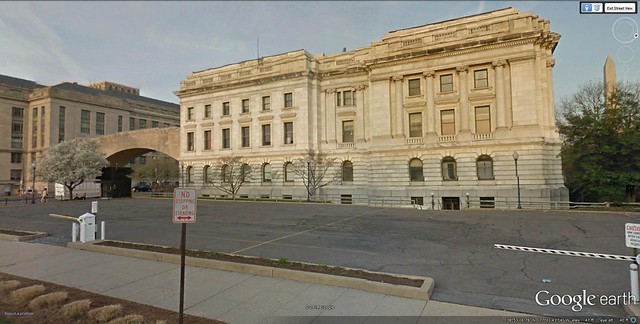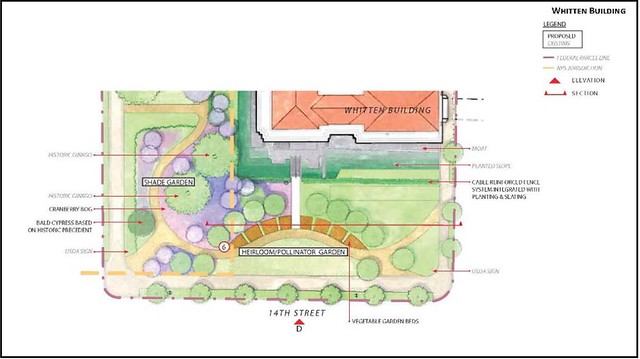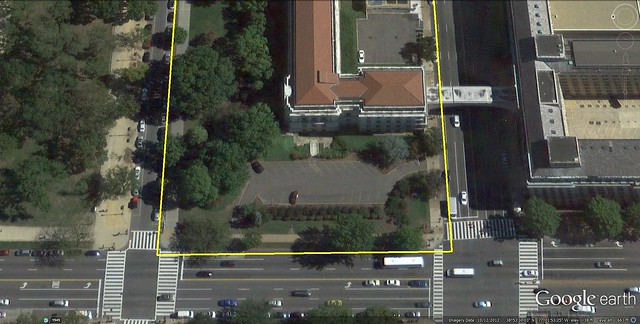Agriculture Department to demonstrate green infrastructure, organic farming in DC 'outdoor museum'

Posted June 27, 2014 at 4:45PM
Heirloom and Pollinator Garden at USDA headquarters
One of the more thoughtful landscaping undertakings I have seen will be installed over the next fifteen years on, appropriately enough, the grounds of the US Department of Agriculture headquarters in Washington. The site is prominently placed on the National Mall just steps away from the Washington Monument and will draw visitors to an “outdoor museum” of green infrastructure and sustainable gardening practices.
The “People’s Garden,” as the project will be known, will be a welcome addition to the Mall, the nation’s most prominent green space but one that has never lived up to its full potential as a place for people. Today, it is largely a place for visitors to the nation’s capital to pass through as they visit the national museums and monuments, but not one whose grounds would influence many to linger. It is exciting to see proposals that begin to improve what is now largely a plain and scruffy, if heavily used, public space.
The plan for the expanded People’s Garden (there is already a much smaller garden of the same name on the site) was recently approved by the National Capital Planning Commission. Although it faces more evaluations and reviews, I predict smooth sailing from here on out. This plan deserves to be implemented, and I believe it will be.
Headquarters, US Department of Agriculture
Site of People's Garden at USDA headquarters
The lengthy, detailed description of the “People’s Garden Site Improvements and Perimeter Security” embedded in the 29-page NCPC Executive Director’s Recommendation reads like a manifesto for outdoor sustainability. When the project is completed, the 20-acre site (including two large USDA buildings) will feature, among other measures, the following:
- Bioretention swales, permeable and pervious paving, soil cells for street trees, and rain gardens;
- Rainwater harvesting and recycling features, along with a green roof and green wall;
- A farmers market;
- An “experimental and agriculturally focused” set of elevated planting beds with rotating crops of herbs, leaf vegetables, root crops, salad plants, grain crops and legumes.
- Companion plants in each bed to attract beneficial insects and deter pests.
- Perennial planting to provide permanent structure to the garden with such commercially grown crops as grape varieties, blueberries, kale, okra, turnips, and herbs including sage, lavender, chives, rosemary, and thyme.
- Demonstrations of several micro-ecosystems, including rain garden, bog, and heirloom garden.
The scheme also includes extensive perimeter security improvements. While I’m not a fan of what such measures generally do to the urbanism and friendly feel of our cities, I recognize that the USDA complex’s prominent placement and size (the South Building alone – not pictured here because it plays a minor role in the People’s Garden project – is the nation’s third-largest federal office building) warrants serious treatment. In this case, the security measures are so nicely integrated into the design of the project that one hardly notices them.
Lincoln Teaching Garden and Market Commons
Teaching Garden and Market Commons site today
Practically every sentence in the Executive Director’s description indicates the purposeful nature of this ambitious project:
“In order to be named a People’s Garden, a site must meet three criteria: provide a benefit to the community, be a collaborative effort, and incorporate sustainable practices. These gardens are educational tools that connect people with their food supply and demonstrate sustainable land use practices . . .
“The concept of celebrating and abstracting patterns of urban agriculture as expressed in the historic realm, and reflecting the mission of USDA in a proud and legible manner, is the underlying principle which grounds the aesthetic arrangement of the project.”
Urbanists will be pleased that much of the space for the new sustainable landscaping is provided by removing surface parking lots. (There is a Metro stop nearby.) I particularly like the transformation of the grounds to the immediate west of the main building from asphalt paving into an “heirloom and pollinator garden” (see images at top and just below). (One of the recommendations of the NCPC is for the complete removal of parking spaces from the building’s ceremonial front court, where the plan now includes eight spaces for visiting dignitaries. I agree.)
Site plan, Shade Garden and Heirloom & Pollinator Garden
Shade Garden and Heirloom & Pollinator Garden site today
One thing I wish the plan included is a small outdoor café, perhaps near the farmers’ market on the east side of the building, where visitors could sample dishes made with some of the crops featured on site. If it were up to me, I’d serve wine, too, as they do in the government-owned gardens of many other countries. I can dream.
Writing on the local urbanist blog Greater Greater Washington, Neal Flanagan notes that, a century ago, the Department of Agriculture maintained a popular arboretum on the National Mall. In a sense, the new plan marks a return to that part of the agency’s public outreach. Flanagan approves of the way security is integrated into the project and of its features in general, which he says will turn “an ad hoc landscape of parking lots and scruffy lawns” into “the latest attraction on the National Mall.” Flanagan concludes:
“The design is an excellent effort to create an inviting public realm while meeting the needs of federal agencies. Culturally, it brings the bureaucratic mission of the department into contact with the daily life of city folks . . . The USDA knows that biodiversity makes healthier crops than monocultures. This plan shows that USDA understands that the same rules apply to urban spaces. Hopefully, Washington will see more of this line of thought as agencies rebuild.”
Planning for the expanded People’s Garden was led by DC-based architects OLBN.
Move your cursor over the images for credit information.
Related posts:
- Can the National Mall be re-imagined as a place for people? (April 18, 2012)
- How green infrastructure investments can create commercial property value (December 19, 2013)
- Organic farm prepares veterans for jobs in sustainable agriculture (November 11, 2011)
- The link between sustainable farming and sustainable communities (February 20, 2013)
- The coolest green infrastructure you are likely to see (November 27, 2012)
